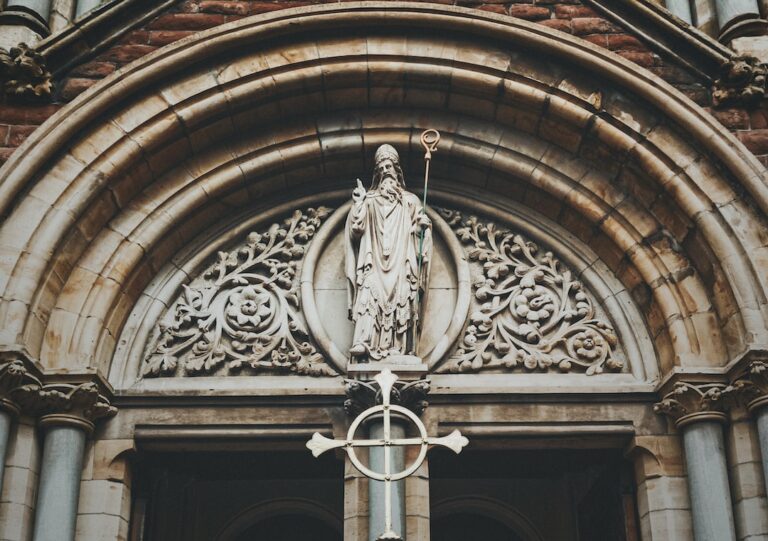Everything About Animal Symbolism

Animal symbolism has played a significant role in various cultures throughout history. Animals have been used to represent different qualities, characteristics, and emotions, and their symbolism has been deeply ingrained in the beliefs and traditions of different societies. From ancient mythology to modern art, animal symbolism has been a powerful tool for expressing ideas and conveying meaning. In this article, we will explore the significance of animal symbolism in different cultures, its role in mythology and folklore, its use in art and literature, its connection to spirituality, its presence in astrology and zodiac signs, its importance in Native American traditions, its impact on the human mind, its evolution in modern society, its interpretation in dreams and visionary experiences, and the different meanings and interpretations of animal symbols.
Understanding the Significance of Animal Symbolism in Different Cultures
Different cultures have varying views on animals and their symbolism. In some cultures, animals are seen as sacred beings with divine qualities, while in others they are associated with specific traits or characteristics. For example, in ancient Egyptian culture, the cat was revered as a symbol of protection and fertility. The Egyptians believed that cats had the ability to ward off evil spirits and bring good fortune. In Hinduism, the cow is considered sacred and is associated with abundance and fertility. Cows are often worshipped and treated with great respect in Hindu culture.
Animal symbolism can also vary within a single culture. For instance, in Chinese culture, the dragon is seen as a symbol of power, strength, and good luck. However, in Western culture, dragons are often depicted as fierce creatures associated with danger and destruction. This shows how animal symbolism can be influenced by cultural beliefs and interpretations.
The Role of Animal Symbolism in Mythology and Folklore
Animals have long been used as characters in myths and folklore to convey moral lessons or explain natural phenomena. In Greek mythology, for example, the owl is associated with wisdom and knowledge. The goddess Athena, who is the goddess of wisdom, is often depicted with an owl by her side. In Native American folklore, the coyote is a trickster figure who often plays pranks on other animals and humans. The coyote is seen as a symbol of cunning and adaptability.
Animal symbolism in mythology and folklore can also be used to explain natural phenomena. In Norse mythology, the rainbow bridge Bifröst is said to be guarded by the god Heimdallr, who takes the form of a rainbow-colored rooster. This symbolizes the connection between the mortal world and the realm of the gods.
How Animal Symbolism is Used in Art and Literature
Animals have been a popular subject in art and literature for centuries. They are often used to convey emotions, ideas, or themes. For example, in literature, the white whale in Herman Melville’s “Moby-Dick” represents obsession and the destructive nature of man. In art, the dove is often used as a symbol of peace and hope. Pablo Picasso’s famous painting “Guernica” features a dove at its center, representing the desire for peace amidst the chaos of war.
Animal symbolism in art and literature can also be used to explore human nature and behavior. In George Orwell’s “Animal Farm,” different animals represent different social classes and political ideologies. The pigs, for example, represent the ruling class, while the other animals represent the working class.
The Connection Between Animal Symbolism and Spirituality
Animals have long been associated with spirituality and are often seen as messengers or guides from the spiritual realm. In many indigenous cultures, animals are believed to possess spiritual qualities and are seen as intermediaries between humans and the divine. For example, in Native American spirituality, animals are seen as teachers who can impart wisdom and guidance.
Animal symbolism in spirituality can also be used to represent different aspects of the human psyche. In Carl Jung’s theory of archetypes, animals are seen as symbols of the unconscious mind. For example, the lion represents strength and courage, while the snake represents transformation and rebirth.
Animal Symbolism in Astrology and Zodiac Signs

Animals are also used in astrology and zodiac signs to represent different personality traits and characteristics. Each zodiac sign is associated with a specific animal that is believed to embody the qualities of that sign. For example, Aries is represented by the ram, which symbolizes leadership and assertiveness. Taurus is represented by the bull, which symbolizes strength and determination.
Animal symbolism in astrology can also be used to understand compatibility between different signs. For example, in Western astrology, it is believed that certain signs are more compatible with each other based on their animal symbolism. This can help individuals understand their relationships and interactions with others.
The Importance of Animal Symbolism in Native American Traditions
In Native American traditions, animals hold a special place and are seen as sacred beings with spiritual significance. Animals are often seen as teachers who can guide humans on their spiritual journey. Each animal is believed to possess unique qualities and characteristics that can be learned from.
Animal symbolism in Native American traditions is also used in ceremonies and rituals. For example, the buffalo is considered a sacred animal in many Native American cultures and is often used in ceremonies to honor its strength and abundance.
The Psychology Behind Animal Symbolism and Its Impact on the Human Mind
Animal symbolism has a profound impact on the human mind and can evoke strong emotions and associations. This is because animals have been deeply ingrained in our collective consciousness and have been a part of our lives since ancient times. The use of animal symbolism can tap into our primal instincts and evoke deep-seated emotions.
Animal symbolism is also used in psychology to understand human behavior and personality. For example, the Rorschach inkblot test, which is used to assess personality traits and psychological disorders, often includes animal imagery. The way individuals interpret these images can provide insights into their subconscious thoughts and emotions.
The Evolution of Animal Symbolism in Modern Society
In modern society, animal symbolism has evolved and taken on new meanings. Animals are often used as mascots or symbols for sports teams, companies, or organizations. For example, the Nike logo features a swoosh, which is said to represent the wings of the Greek goddess Nike. This symbolizes speed and victory.
Animal symbolism is also used in advertising and marketing to evoke certain emotions or associations. For example, a luxury brand may use a lion as its logo to convey strength and power.
The Interpretation of Animal Symbolism in Dreams and Visionary Experiences
Animals are often interpreted in dreams and visionary experiences as symbols of different aspects of the self or the unconscious mind. For example, dreaming of a snake may symbolize transformation and change, while dreaming of a bird may symbolize freedom and spirituality.
Animal symbolism in dreams and visionary experiences can also be influenced by cultural beliefs and personal experiences. For example, in some cultures, dreaming of a black cat is seen as a bad omen, while in others it is seen as a sign of good luck.
Exploring the Different Meanings and Interpretations of Animal Symbols
Animal symbols can have different meanings and interpretations depending on the context and culture. For example, the wolf is often associated with loyalty and protection in Native American traditions, but in Western culture it is often associated with danger and aggression.
Animal symbols can also have personal meanings for individuals based on their own experiences and beliefs. For example, someone who has had a positive experience with a certain animal may see it as a symbol of good luck or protection.
In conclusion, animal symbolism has played a significant role in different aspects of life, from culture and mythology to art and spirituality. Animals have been used to represent different qualities, characteristics, and emotions, and their symbolism has been deeply ingrained in our collective consciousness. Whether it is in ancient mythology or modern advertising, animal symbolism continues to be a powerful tool for expressing ideas and conveying meaning. By understanding the significance of animal symbolism in different cultures and contexts, we can gain a deeper appreciation for the rich tapestry of meanings that animals hold.
If you’re interested in exploring the symbolism of animals, you might also enjoy reading about the symbolism of a snake. Snakes have long been associated with various meanings and interpretations across different cultures and religions. To delve deeper into this fascinating topic, check out this article on symbolismhub.com. It provides insights into the symbolic significance of snakes and how they have been perceived throughout history.
FAQs
What is animal symbolism?
Animal symbolism is the use of animals to represent ideas, emotions, and characteristics in various cultures and traditions. It is a way of communicating complex concepts through the use of animal imagery.
What are some common animal symbols?
Some common animal symbols include the eagle, which represents strength and freedom, the lion, which represents courage and power, and the owl, which represents wisdom and knowledge. Other animals commonly used in symbolism include the snake, the wolf, and the bear.
What is the significance of animal symbolism?
Animal symbolism is significant because it allows people to communicate complex ideas and emotions in a way that is easily understood. It also allows people to connect with nature and the animal world, and to understand the role that animals play in our lives and in the world around us.
What are some examples of animal symbolism in different cultures?
In Native American culture, the eagle is a symbol of strength and courage, while the bear represents healing and protection. In Chinese culture, the dragon is a symbol of power and good luck, while the tiger represents strength and bravery. In Hindu culture, the cow is a symbol of motherhood and fertility, while the monkey represents playfulness and mischief.
How is animal symbolism used in literature and art?
Animal symbolism is often used in literature and art to convey deeper meanings and themes. For example, in George Orwell’s “Animal Farm,” the animals represent different political ideologies and social classes. In art, animals are often used to represent different emotions and ideas, such as the use of the dove to represent peace and the use of the snake to represent temptation.
What is the difference between animal symbolism and animal totems?
Animal symbolism is the use of animals to represent ideas and emotions, while animal totems are specific animals that are believed to have spiritual significance and are often associated with a particular individual or group. Animal totems are often used in Native American and other indigenous cultures as a way of connecting with the spiritual world.





